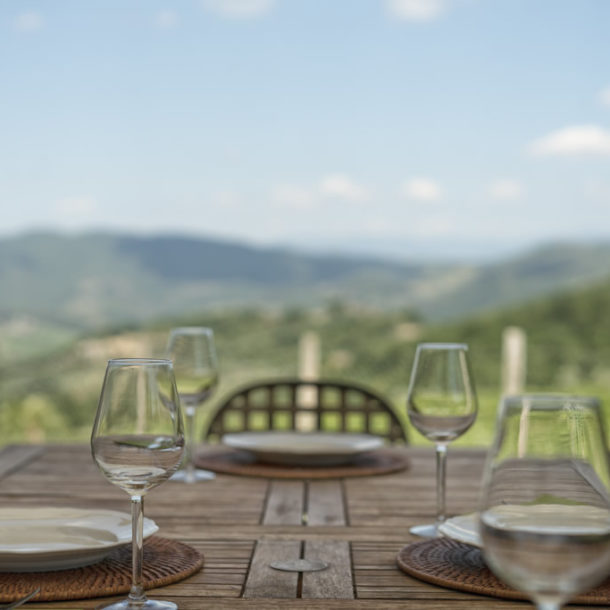

Close

Have you ever wondered who the first vine-growing peoples in Italy were?
Well, in this article we will try to understand how the vine first spread in our areas and how later a particular population made wine production one of its main businesses.
New studies about our Past
Recent studies show that the vine first spread to Thrace (although it most likely came directly from Armenia) and then, thanks to the Phoenicians, great explorers and navigators, it spread to Greece and Italy.
Obviously, the Greeks initially established vine cultivation in the south of the peninsula in what was known as Magna Graecia, but with the passage of time, the populations of central Italy also began to engage in viticulture. The Etruscans, in particular, were pioneers in this field. Etruscan tombs of varying size and importance can be found in much of Chianti, and in many of them vine seeds have been found, proving their strong link with viticulture.+
The Origins
It is said that the first certain evidence of wine production dates back to the seventh century BC.
Various types of artefacts have been found, in particular ceramic vases dating from that period.
The Etruscans were originally from Tuscany (Tuscia) and the northern part of Latium, although their dominion soon spread to much of central Italy, so that their winemaking techniques spread rapidly.
Moreover, they were the first “exporters” of wine: it was not uncommon to find Etruscan boats sailing the Tyrrhenian Sea to foreign lands to trade in wine and typical products.
Women in Etruscan Society
It is also important to emphasise that women were the beating heart of this civilisation. Involved in business in an important way, they often took on decision-making roles of vital importance for trade.
It is said that the Etruscans had been cultivating vines since the Bronze Age. They had managed to implement the yield of varieties that were already present in nature. We are therefore talking about indigenous, wild varieties, of which they initially only harvested the fruit. However, when the Etruscan civilisation came into contact with those of Magna Graecia, they were able to import new vines and acquire new cultivation techniques.
The new vines were also crossed by grafting with native varieties from central Italy.
The Winemaking
As far as winemaking systems are concerned, we have no documents showing what kind of techniques the Etruscans used, but it is plausible that since they taught the Romans how to make wine, the technique was almost identical.
The Etruscans pressed the grapes in wine presses called palmenti, which were dug out of natural rocky outcrops close to where the wild vines grew or made in the vineyards at the time of the first cultivations. The millstones were covered with canopies to shade them and protect them from the rain. The ‘palamenti’ consisted of two cavities at different heights, connected by a drainage channel. The grapes were pressed with their feet in the basin and the drainage channel was closed with clay. After fermentation and vinification, the hole was opened and the liquid was allowed to pass into the lower tank, where vinification was completed. The marc in the upper tank was pressed with stones to recover the residual must. The first must was usually consumed immediately, while the rest was poured into ceramic containers with resin-covered inner walls. The wine was left to rest and in spring was decanted and poured into amphorae for transport and marketing.
Something more.
A final, but certainly important aspect to consider was how the Etruscans consumed wine. In fact, for this civilisation it was an integral part of meals, but it was not exactly conceived as just a drink. It was much more like food. Spices were added and sometimes honey or cheese.
As we have already said, it was considered more of a food than a real drink to accompany meals.
We therefore understand that it was a product very distant from what we call “wine” today, but obviously we owe to this population the spread of viticulture and the first wine-making techniques, especially in central Italy.
In fact, the Etruscans are the ancestors of all those Chiantigiani who now produce wine in our area, keeping this centuries-old tradition alive.
VILLA LA PETRAIA
Via Giovanni da Verrazzano 32 – 50022 Panzano in Chianti (FI) Italy
Mobile: +39 333 9591881 – +39 333 1744577
- info@villalapetraia.com
FIENILE SANTA TERESA
Via San Martino a Cecione 32/A
– 50022 Panzano in Chianti (FI) Italy
Mobile: +39 333 9591881 – +39 333 1744577
- info@villalapetraia.com
CIN La Petraia: IT048021B4NMFQPYRR – CIN Santa Teresa: IT048021B4VO4SNBBR
© 2021 Elysian & Querencia s.n.c. – P.Iva 06816690488 – Powered by SwollyStudio